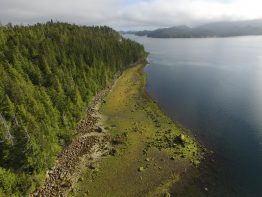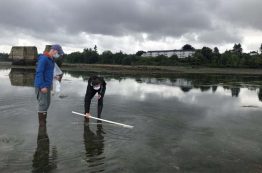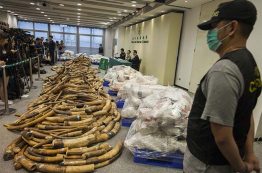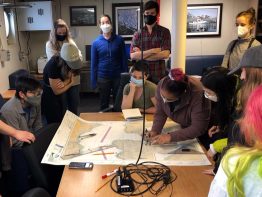Indigenous people have been stewarding the ocean for thousands of years. This stewardship has appeared in many different forms around the world, all of which represent a reciprocal relationship between humans and the sea rooted in deep, place-based knowledge. From octopus houses in Haida Gwaii to fish ponds in Hawai’i, an Indigenous mariculture renaissance is making waves as groups across the Pacific seek to revitalize these ancient techniques and traditions.
Read more at Washington Sea Grant »eDNA a useful tool for early detection of invasive green crab
European green crabs feast on shellfish, destroy marsh habitats by burrowing in the mud and obliterate valuable seagrass beds. The invasive species also reproduces quickly, making it a nightmare for wildlife managers seeking to control its spread in Washington’s marine waters. Last month, Gov. Jay Inslee issued an emergency order in response to more than 70,000 crabs caught on Lummi Nation land as well as dramatic increases in crab populations on Washington’s outer coast and other locations in Puget Sound in recent years.
Read more at UW News »New Center for Environmental Forensic Science aims to disrupt and dismantle international illegal wildlife trade
Across the globe, endangered species are at risk for illegal poaching. African elephants are sought out for their ivory, rhinoceros for their singular horns, and armadillo-like pangolins for their protective, brittle scales. Add to that list valuable and environmentally sensitive trees illegally harvested throughout the world where entire ecosystems are being deforested and illegal, unreported and unregulated fishing that is devastating oceans.
Read more at UW News »Going beyond “just the facts” towards a narrative in your science communication
If you want to grab and keep people’s attention, utilizing storytelling techniques in your communication — written, verbal or otherwise — can be powerful. Storytelling is a tried-and-true method of sharing information, one that long precedes the scientific paper. Good stories appeal to our humanity, tap into our emotions, create a connection and can keep the listener engaged as they become invested in the outcome.
Read more »How COVID-19 changed research on the high seas
For crew members of the UW research vessel Thomas G. Thompson, the last two years have been a test of preparedness and resilience while conducting research at sea. On top of the usual threats of rough seas and homesickness, seafarers now have to factor in the worldwide coronavirus pandemic, which has had a special knack for spreading rapidly on ships. While the isolated nature of research on the open ocean might have seemed like welcome distance from the rest of humanity during the early days of the pandemic, many will remember how some of the first stories of the virus’ potential came from shipboard outbreaks.
Read more »





